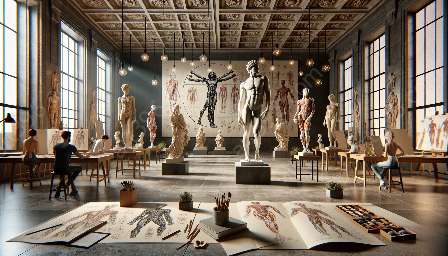As artists, it's vital to consider sustainability in our creative practices, even in gesture drawing. This entails understanding how our materials and methods impact the environment and embracing ethical and eco-friendly approaches. When it comes to gesture drawing and anatomy, sustainability can be integrated to complement these disciplines, resulting in a more holistic and socially responsible artistic process.
The Importance of Sustainability in Gesture Drawing
Gesture drawing is a foundational skill for artists, allowing for the capture of movement, form, and expression in a quick and spontaneous manner. However, traditional gesture drawing practices often involve the use of disposable materials such as paper, which can contribute to deforestation and waste generation. By adopting sustainable practices, artists can minimize their environmental footprint without compromising the quality of their work.
Relevance to Anatomy
Anatomy plays a crucial role in gesture drawing, as understanding the human form is essential for accurately portraying movement and expression. Sustainable gesture drawing practices can align with the study of anatomy by encouraging artists to make conscious choices regarding the materials they use, opting for recycled or biodegradable alternatives. By doing so, artists contribute to the preservation of natural resources while honing their anatomical skills.
Artistic Anatomy and Sustainability
Artistic anatomy delves deeper into the study of the human body, focusing on the structural and aesthetic aspects. Integrating sustainability into artistic anatomy involves exploring eco-conscious drawing techniques and embracing eco-friendly materials. This not only reflects a commitment to environmental stewardship but also inspires a deeper connection between the artist, the subject, and the audience through a shared appreciation for nature and sustainability.
Incorporating Sustainability into Your Practice
There are numerous ways to incorporate sustainability into gesture drawing practices. Artists can use recycled or ethically sourced paper, experiment with non-toxic and biodegradable drawing mediums, and explore digital alternatives to traditional paper and canvas. Additionally, reusing and repurposing materials can breathe new life into the artistic process, fostering creativity while reducing waste.
Conclusion
Sustainability in gesture drawing practices not only benefits the environment but also enriches the artistic journey. By embracing sustainability, artists can make a meaningful impact, cultivating a more conscious and empathetic approach to their creative endeavors. This integration of sustainability with gesture drawing, anatomy, and artistic anatomy fosters a harmonious relationship between art and nature, paving the way for a more beautiful and responsible artistic future.

